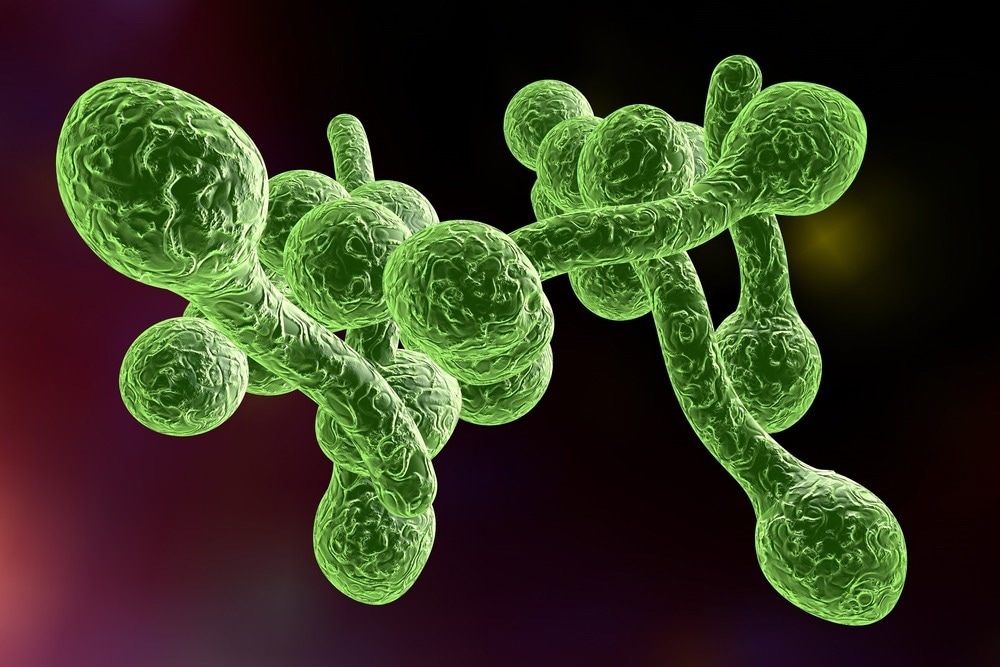An international group of researchers from the University of Bern and the University of Queensland in Australia has shown that chemical compounds comprising special metals are highly effective in combating harmful fungal infections. These findings could be applied to create ground-breaking drugs that are successful against resistant fungi and bacteria.

Image Credit: Kateryna Kon/Shutterstock.com
Annually, over one billion people are infected with a fungal infection. Although these infections are harmless to most, more than 1.5 million patients die following infection each year. While fungal strains are increasingly being detected as being resistant to one or more of the available drugs, creating new drugs has come to a virtual halt in the last few years. Currently, only about a dozen clinical trials are happening with new active agents for fungal infection treatment.
In comparison with more than a thousand cancer drugs that are currently being tested on human subjects, this is an exceptionally small number.
Dr. Angelo Frei, Study Lead Author, Department of Chemistry, Biochemistry and Pharmacy, University of Bern
The results of the study have been reported in the journal JACS Au.
Boosting Antibiotics Research with Crowd Sourcing
To inspire the creation of antifungal and antibacterial agents, scientists at the University of Queensland in Australia have set up the Community for Open Antimicrobial Drug Discovery (CO-ADD). The aspiring goal of the enterprise is to discover new antimicrobial active agents by giving chemists globally the chance to test any chemical compound against fungi and bacteria free of charge.
As Frei elucidates, the preliminary focus of CO-ADD surrounded “organic” molecules, which mostly comprise the elements of carbon, oxygen, hydrogen, and nitrogen and do not comprise any metals.
However, Frei, who is attempting to create new metal-based antibiotics with his study group at the University of Bern, has discovered that more than 1,000 of the over 300,000 compounds tested by CO-ADD carried metals.
For most folks, when used in connection with the word ‘people’, the word metal triggers a feeling of unease. The opinion that metals are fundamentally harmful to us is widespread. However, this is only partially true. The decisive factor is which metal is used and in which form.
Dr. Angelo Frei, Study Lead Author, Department of Chemistry, Biochemistry and Pharmacy, University of Bern
Dr. Frei is in charge of all the metal compounds in the CO-ADD database.
Low Toxicity Demonstrated
In their new research, the team focussed on the metal compounds which displayed activity against fungal infections. During the study, 21 highly-active metal compounds were tried out against several resistant fungal strains. These carried the metals nickel, cobalt, molybdenum, rhodium, silver, palladium, europium, platinum, iridium, and gold.
Many of the metal compounds demonstrated a good activity against all fungal strains and were up to 30,000 times more active against fungi than against human cells.
Dr. Angelo Frei, Study Lead Author, Department of Chemistry, Biochemistry and Pharmacy, University of Bern
The extremely active compounds were then tested in a model organism, the larvae of the wax moth. The scientists noticed that only one of the eleven tested metal compounds displayed indications of toxicity, while the others were well endured by the larvae. In the following step, a few metal compounds were tested in an infection model, and one compound successfully decreased the fungal infection in larvae.
Considerable Potential for Broad Application
Metal compounds have been used in the realm of medicine: Cisplatin, for instance, which holds platinum, is one of the most extensively used anti-cancer drugs. Despite this, there is a lengthy process before new antimicrobial drugs that comprise metals will be permitted.
Our hope is that our work will improve the reputation of metals in medical applications and motivate other research groups to further explore this large but relatively unexplored field. If we exploit the full potential of the periodic table, we may be able to prevent a future where we don’t have any effective antibiotics and active agents to prevent and treat fungal infections.
Dr. Angelo Frei, Study Lead Author, Department of Chemistry, Biochemistry and Pharmacy, University of Bern
The research work received support from the Swiss National Science Foundation, the University of Queensland, and the Wellcome Trust, among others.
Journal Reference:
Frei, A., et al. (2022) Metal Complexes as Antifungals? From a Crowd-Sourced Compound Library to the First In Vivo Experiments. JACS Au. doi.org/10.1021/jacsau.2c00308.